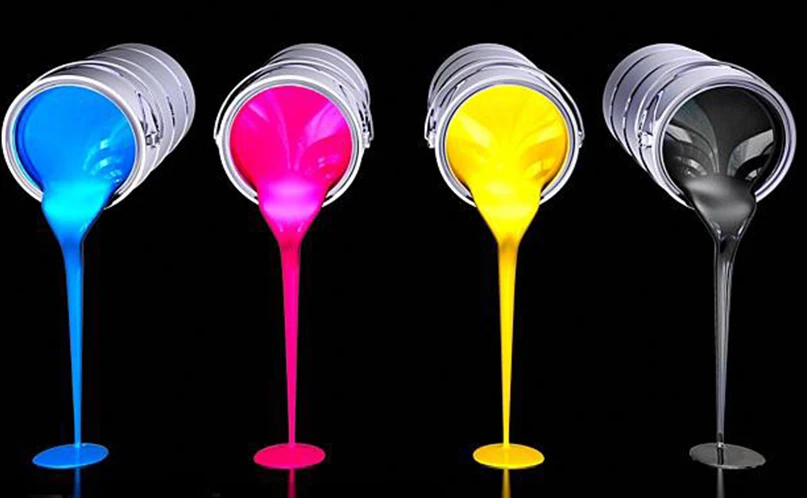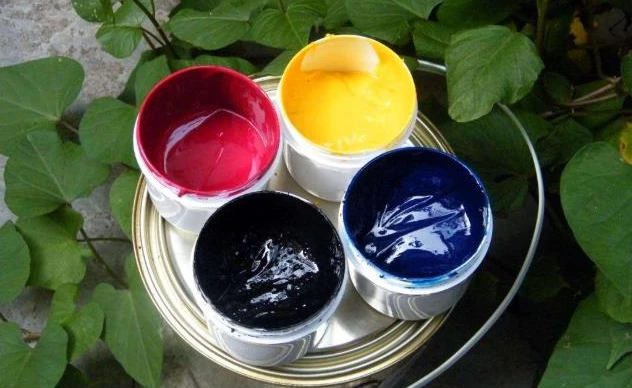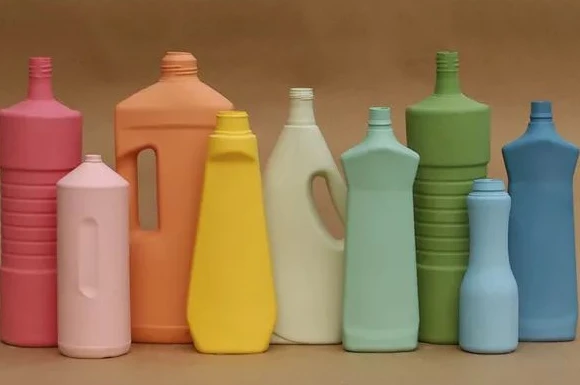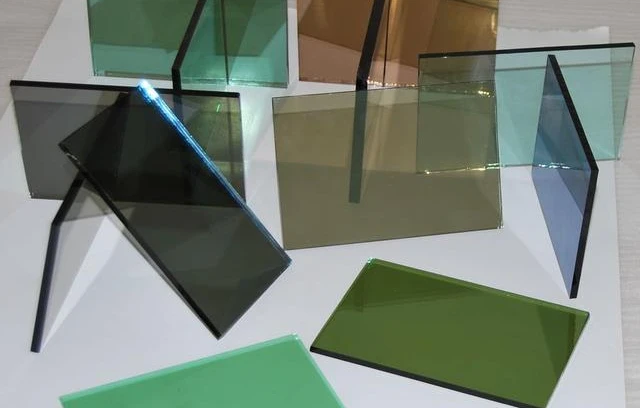The phenomenon that the printing ink adheres to the surface of the printing substrate is a phenomenon of adsorption. We usually render it an interfacial phenomenon. It pertains to the adherence of atoms and molecules from one substance onto the surface of another. There is anonther similar phenomenon called “absorption”, it is also an interfacial phenomenon. The process involves the uniform permeation of atoms and molecules from one substance through the interface, allowing them to penetrate into the interior spaces among the atoms or molecules of another substance. When both adsorption and absorption occur simultaneously, the term “adhesion” is employed to describe this phenomenon. Adhesion strength, also referred to as adhesion, denotes the force with which ink adheres to the print surface. To enhance this adhesion, two primary aspects should be prioritized: the suitability of the ink for printing, and the printability of the substrate material.

1. Ink Printability
1.The critical role of resin in ink formulations is underscored by its compatibility with the substrate, being a pivotal component of the ink vehicle that directly impacts adhesion strength. In standard practice, ink selection for metal substrates necessitates the use of epoxy resin as the binder, due to its epoxy groups and reactive nature that foster robust adhesion upon cross-linking. Conversely, for polyethylene plastics, the binder resin should mirror the substrate material, utilizing polyethylene for optimal printability. Similarly, polypropylene serves as the appropriate binder when printing on polypropylene substrates, as they share comparable polarity and molecular weights. For polyurethane materials, adopting polyurethane resin as the binder ensures the ink film layer possesses exceptional durability, wear resistance, and adhesion qualities upon printing.
2.Effective printing onto a substrate necessitates a close match in solubility parameters between the resin solvent, and substrate components within the ink. When these parameters align, the solvent exerts a swelling effect on the substrate surface, facilitating the resin’s traversal across the interface and penetration into the substrate’s interior. This process ultimately results in the formation of a strong and durable adhesion between the ink and the substrate.
3.Addition of Suitable Additives.
To bolster adhesion, incorporating suitable adhesion promoters is paramount. These promoters function as coupling agents, streamlining the bonding between the resin in the ink and the polymer substrate material, ultimately elevating the ink’s adhesion capabilities.
Furthermore, the inclusion of crosslinking agents plays a pivotal role in fortifying adhesion. By creating crosslinks within the adhesive, these agents not only lower the film formation temperature but also significantly improve the ink’s adhesion. Additionally, they enhance the ink film’s hardness, water resistance, solvent resistance, and drying speed, contributing to an overall superior performance.

2. Surface Treatment of Substrates for Inks
Treatment of plastics and plastic films. The diverse molecular structures, densities, crystallinities, and surface polar group compositions of plastics and plastic films lead to substantial variations in their properties, even within the same plastic type, where densities can span a wide range. These factors, coupled with production-induced surface smoothness and the incorporation of stabilizers that confer acid-base resistance and anti-oxidation properties, often result in poor ink adsorption capabilities. Consequently, the adhesion and wear resistance of the printed ink layer are significantly impacted, necessitating surface treatment prior to printing. The cornerstone of this treatment involves altering the polarity of the plastic surface, transforming typically non-polar surfaces into ones that possess polar groups capable of bonding with the polar groups found in the ink’s binder. This transformation fosters a robust adherence of the ink to the plastic surface.
3. Common Ink surface treatment methods for plastics
(1) Corona discharge treatment
The corona discharge treatment employs a device structured with a high-voltage alternating current motor, an output transformer, and a pair of electrodes. As the plastic film traverses the narrow space between these electrodes, a high voltage triggers the ionization of atmospheric oxygen, yielding ozone. This process energizes the film’s surface, initiating a corona discharge that prompts the emergence of polar groups. Consequently, the molecular polarity intensifies, elevating the surface tension. Concurrently, the treatment eliminates dust and creates microscopic indentations imperceptible to the human eye, effectively roughening the surface. This transformation bolsters the substrate’s capacity to absorb ink, making corona discharge treatment a prevalent and effective method in current practices.
(2) Flame treatment method
The flame treatment method operates on the principle of swiftly exposing the plastic film to an oxidizing flame. This rapid passage through the flame eliminates microscopic imperfections, knocking out invisible burrs, significantly enhancing the ink’s adhesion to the surface. The essence of this technique lies in the word “swift”, as any delay risks “burning” the surface, which can diminish ink adhesion and result in the detachment of both the flame-treated oxide film and the ink layer. Thus, the treatment temperature must be meticulously maintained below the plastic film’s thermal deformation threshold to ensure optimal results.
(3) Plasma treatment
Plasma treatment harnesses the power of intense electric fields, high temperatures, and laser energy to strip electrons from neutral atoms or molecules, transforming them into ions—a state where positive and negative charges are in equilibrium, hence the term plasma. An RF generator fuels this process by emitting laser energy at high voltages, initiating a distinctive glow discharge that ionizes surrounding gases, unleashing a cascade of energized electrons, ions, and atoms. These highly reactive particles collide with the plastic surface, prompting structural changes in surface active groups, the emergence of novel groups or free radicals, and ultimately, a deposition process. This dual chemical and physical modification of the polymer surface introduces polarity, enabling the newly acquired polar groups to form strong bonds with the polar components of the ink’s binder, thereby markedly improving ink adhesion.

(4) Chemical and solvent treatment method
Employing chemical and solvent treatment methods, the plastic surface undergoes oxidation with an oxidant agent. This oxidation reaction prompts the generation of hydrophilic groups and other functional moieties on the plastic film’s surface, fostering interactions with the polar groups present in ink. By leveraging oxidation, the adsorption of ink onto the surface is significantly bolstered. For thicker film applications, solvent treatment becomes an option, utilizing surfactants or chlorinated solvents like dichloroethane, pentachloroethane, and trichloroethylene. This approach modifies the wettability of the plastic film’s surface and can neutralize additives introduced during manufacturing, like plasticizers and antioxidants. In parallel, chemical treatment methods involve the application of specific chemicals, such as potassium permanganate, chlorosulfonic acid, and cycloalkyl chromic acid, directly onto the plastic film’s surface. This chemical etching process, through corrosion, enhances the film’s ability to wet with ink, ultimately improving the ink’s adhesion and overall print quality.
(5) Static electricity elimination treatment
The necessity of static electricity elimination prior to printing on plastic films, which are inherently good electrical insulators prone to static charge accumulation and dust attraction, is paramount for optimizing ink adhesion. The cornerstone of this process lies in the application of anti-static agents, primarily silicone-based or surfactant-based formulations. In the case of silicone anti-static agents, preparatory steps involve ridding the surface of grease and moisture using solvents like methanol or ethanol. Subsequently, the agent is applied meticulously, either through brushing, rolling, or immersion, ensuring thorough coverage. This process, optimally conducted at temperatures between 30°C to 40°C or 60°C to 80°C for approximately 3 hours, necessitates thorough drying and a resting period of 5 hours post-application to allow for maximum effectiveness before commencing printing. Alternatively, surfactant anti-static agents operate on a different mechanism, enhancing conductivity and reducing surface resistance to dissipate static charges. Their application methods mirror those of silicone agents, involving roller coating or immersion, ensuring a similar level of meticulousness during the process. Both approaches, through distinct mechanisms, aim to eliminate static electricity and prepare the plastic film surface for optimal ink adhesion.
While the aforementioned treatment methods are widely applicable across various plastic types, there exist certain plastics inherently endowed with polar groups on their surfaces, such as polystyrene and polyvinyl chloride (PVC). These materials, characterized by their rough texture and relatively low density, exhibit unique properties that render pre-treatment unnecessary. Consequently, they can be directly subjected to printing processes without the need for prior surface modifications.
4. Ink treatment of metal substrate materials
During the transportation and storage phases, metals are safeguarded by a protective coating of rust-proof oil and process lubricant. However, these metals, inherently reactive, possess a tendency to absorb atmospheric moisture and oxygen over prolonged exposure, leading to the formation of an oxide film. This oxide film, coupled with the rust-proof oil layer, presents a formidable barrier against ink adhesion, causing repulsion and anti-wetting effects. So, it becomes imperative to prepare the metal surface through appropriate treatment prior to the printing process.

5. Ink treatment for glass surface
Glass, predominantly composed of SiO2, exhibits a unique structural characteristic where silicon atoms are embedded within its matrix while oxygen atoms dominate its surface. This configuration results in a high surface energy, predisposing it to interactions with external substances. For example, upon exposure to air, the glass surface reacts with hydrogen to generate hydrophilic groups, notably OH (hydroxyl) moieties, which accumulate on its surface, hindering ink adhesion. Furthermore, the presence of alkali ions, particularly those forming Na-O bonds, on the glass surface poses an additional challenge. These bonds are susceptible to disruption in the presence of air and water, exacerbating the issue of ink adhesion. Consequently, preparatory surface treatments are imperative prior to printing on glass. The subsequent section outlines several common treatment methodologies employed for this purpose.

(1) Lipophilic treatment
Lipophilic treatment is a strategic approach involves applying silane coupling agents onto the glass surface. This process fosters the formation of lipophilic groups, significantly improving the glass’s affinity towards ink. One implementation entails coating the surface with a 0.5% to 1% solution of the coupling agent dissolved in ethanol, which, upon hydrolysis, establishes a robust affinity. Alternatively, the coupling agent can be pre-mixed into the ink at a concentration of 1% to 5%, allowing it to spontaneously diffuse onto the glass surface post-printing.
(2) De-greasing treatment
This step focuses on enhancing wettability by eliminating oils and fats from the glass surface. This can be accomplished either through washing with solvents like acetone or methyl ethyl ketone (MEK), or alternatively, by employing dichloroethylene vapor for an effective degreasing process.
(3) Strong acid treatment
Strong acid treatment is employed as a means to eliminate alkali ions from the glass surface. This method is designed to further bolster the adhesion of ink, ensuring optimal print quality and durability.
(4) Physical treatment
Subsequently, physical treatment methods come into play, utilizing either fine abrasive powder for light sandblasting or water sandpaper for water grinding. These techniques aim to refine the glass surface by removing contaminants, thereby enhancing its ability to accept and adhere to ink.
More information about Inks, you can check:
What are the performance testing items for ink?
Guide on Fabric Colorants: (Types, Uses, Techniques and How to Buy)
OUR PIGMENT POWDER PRODUCTS



